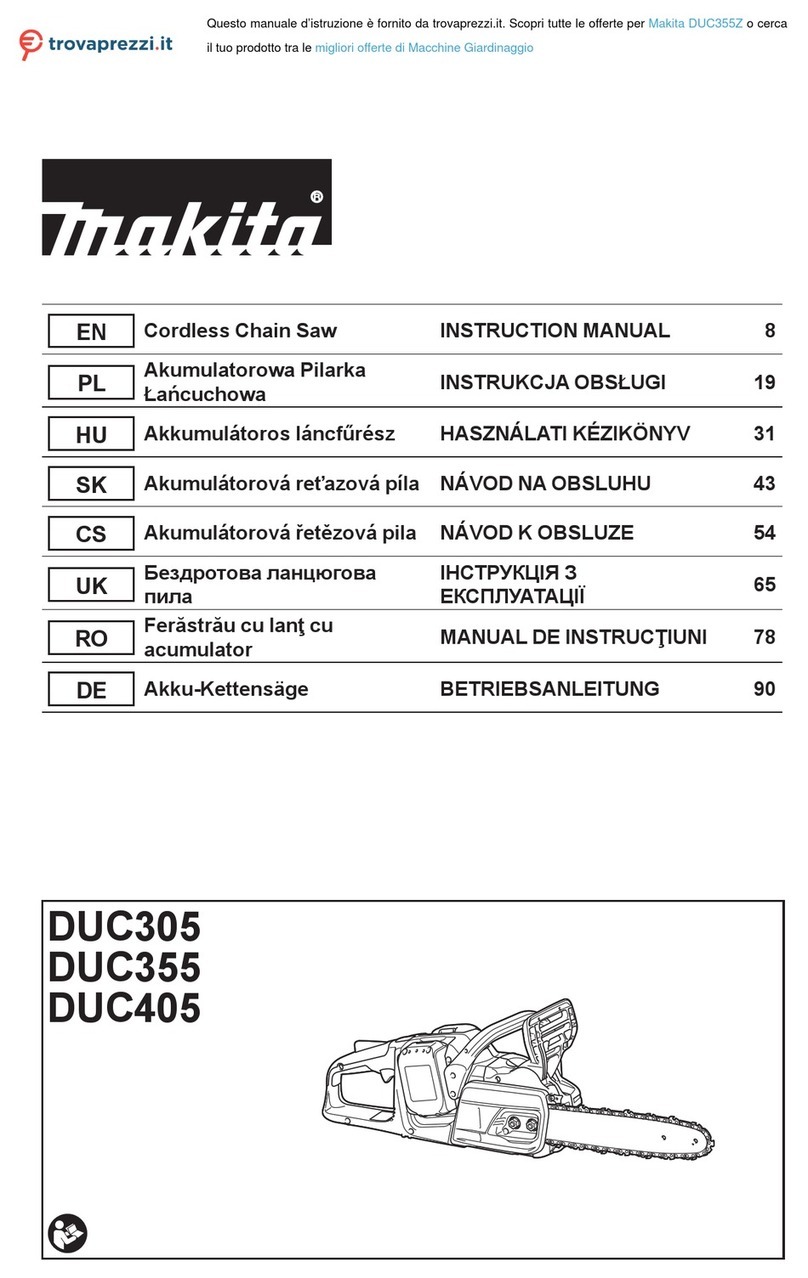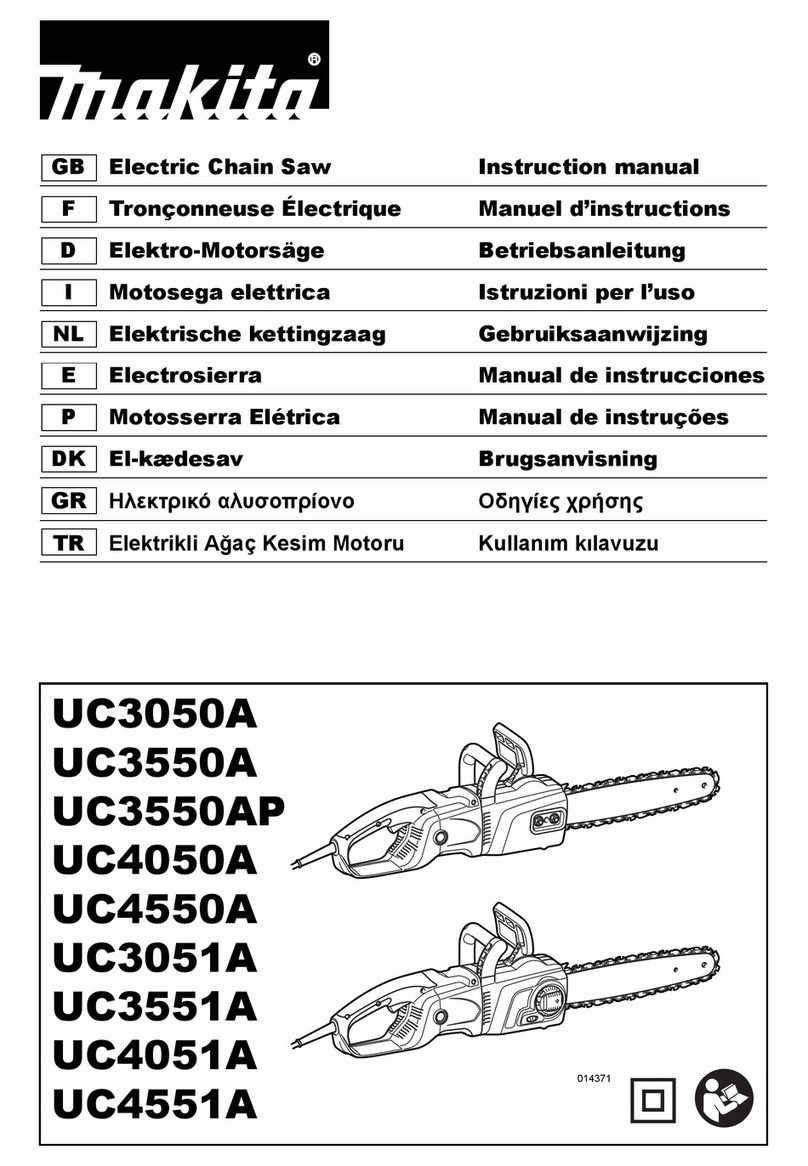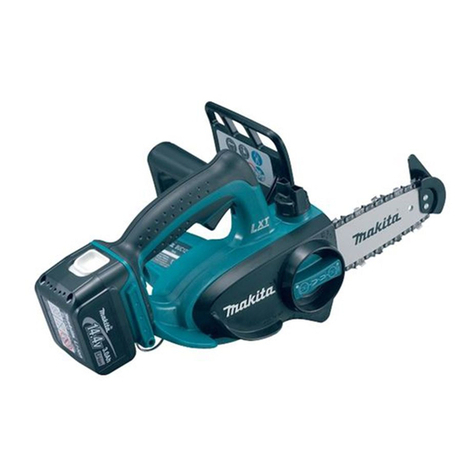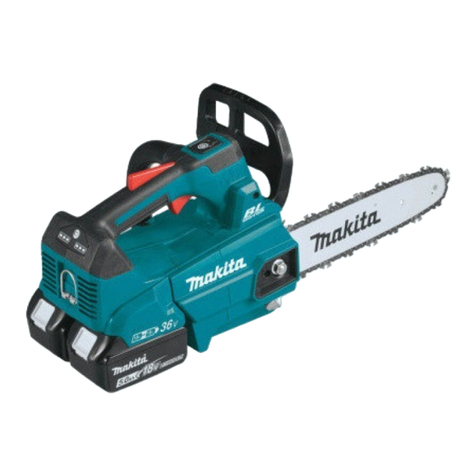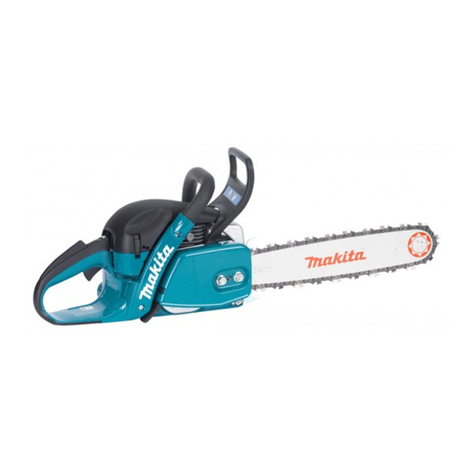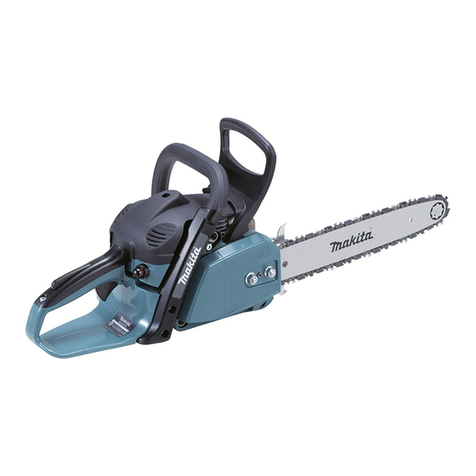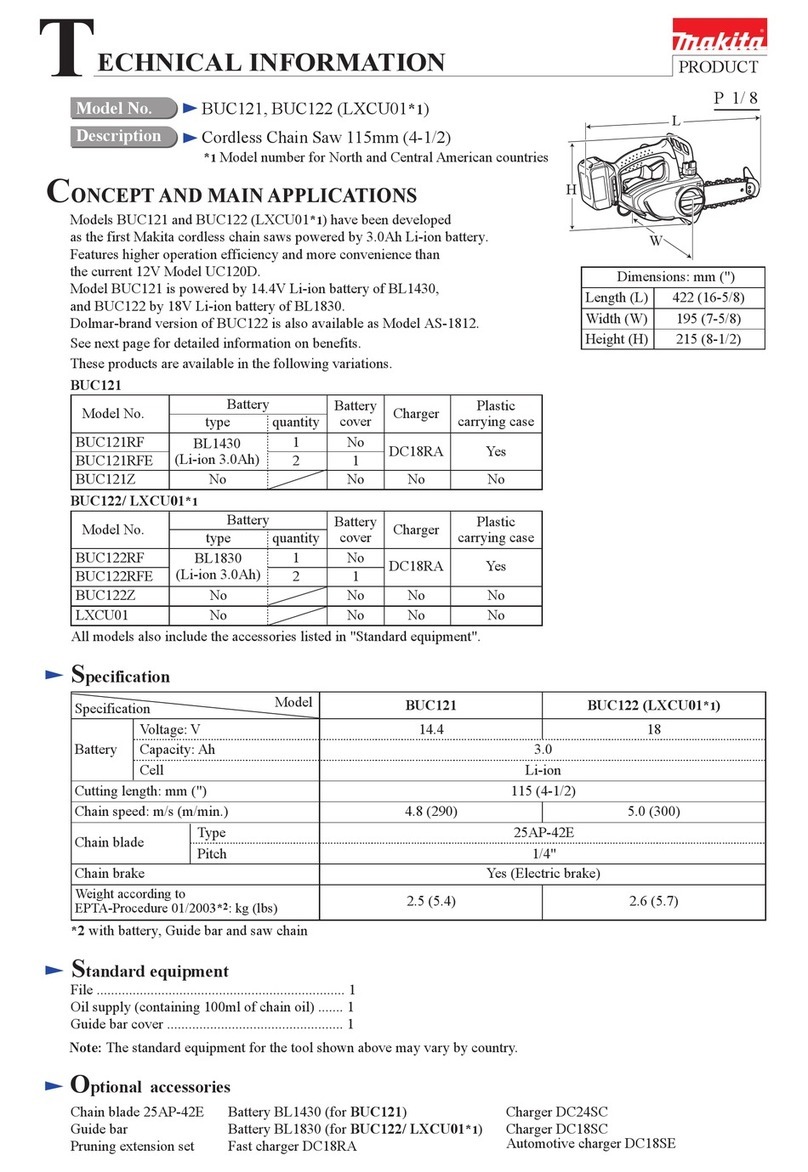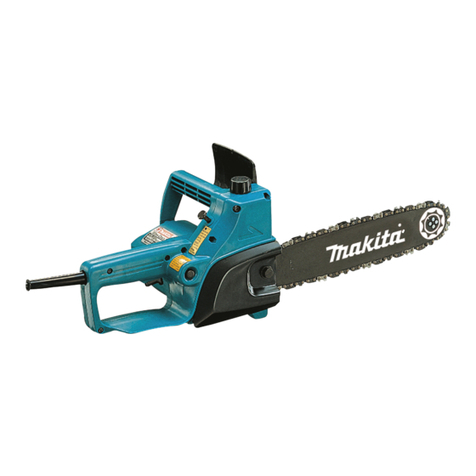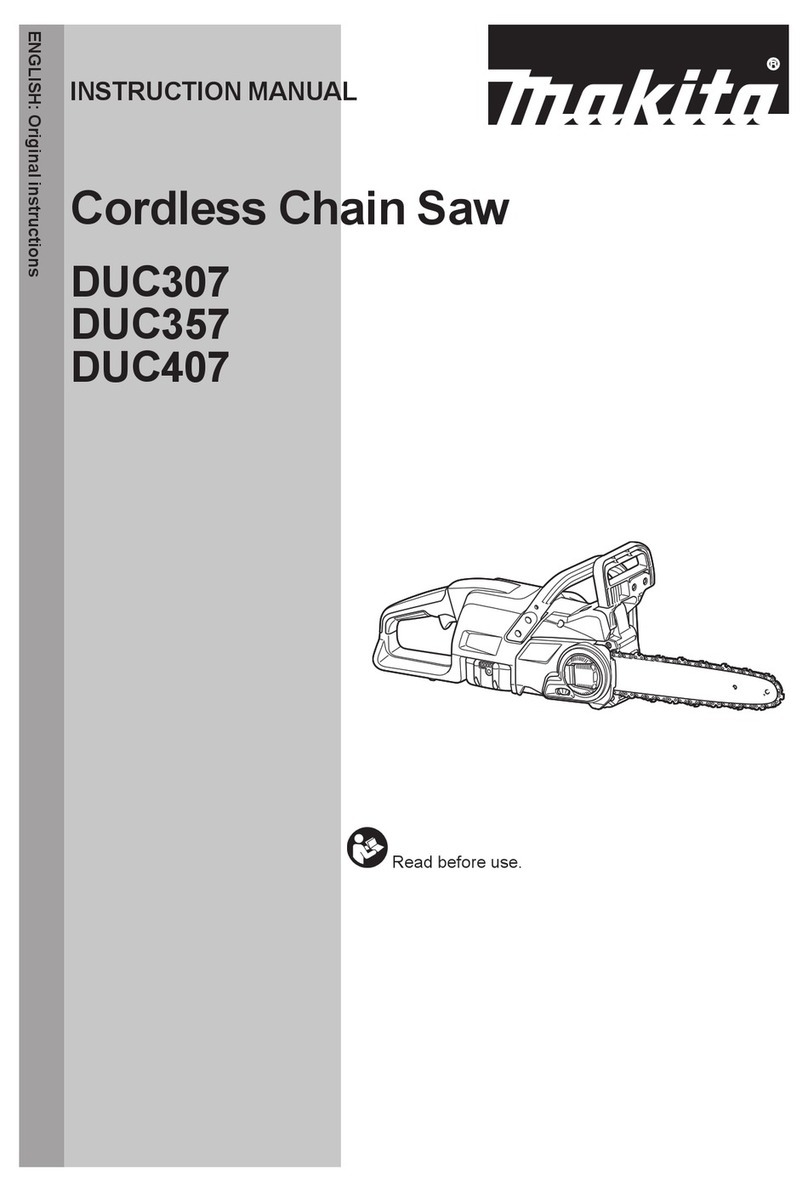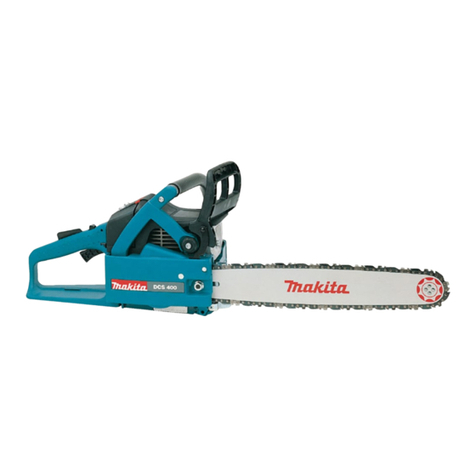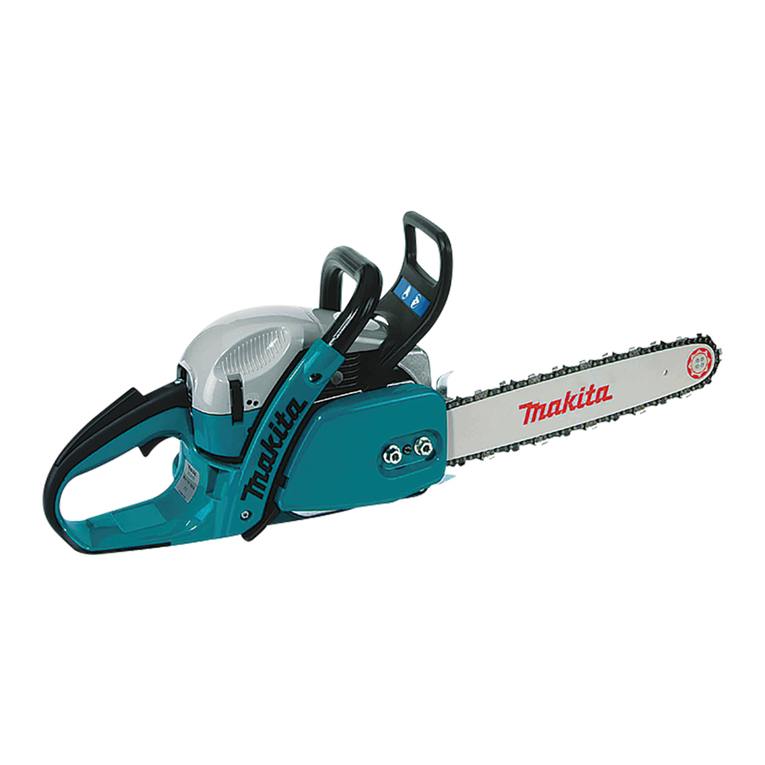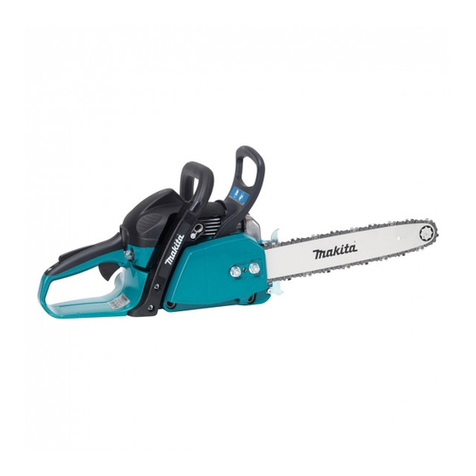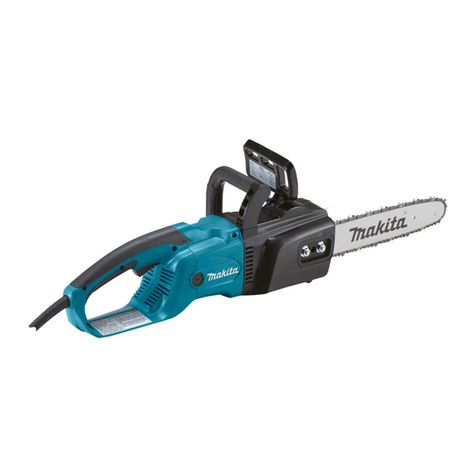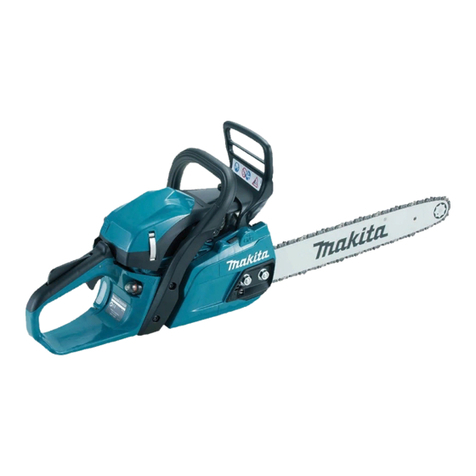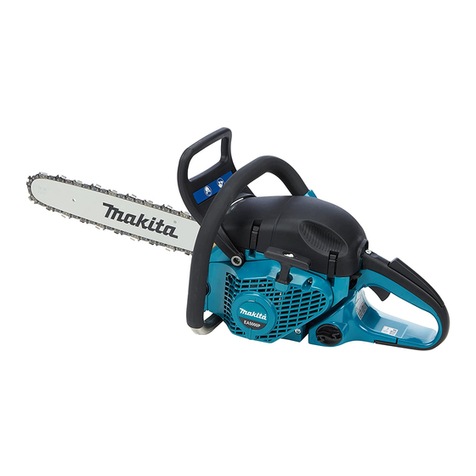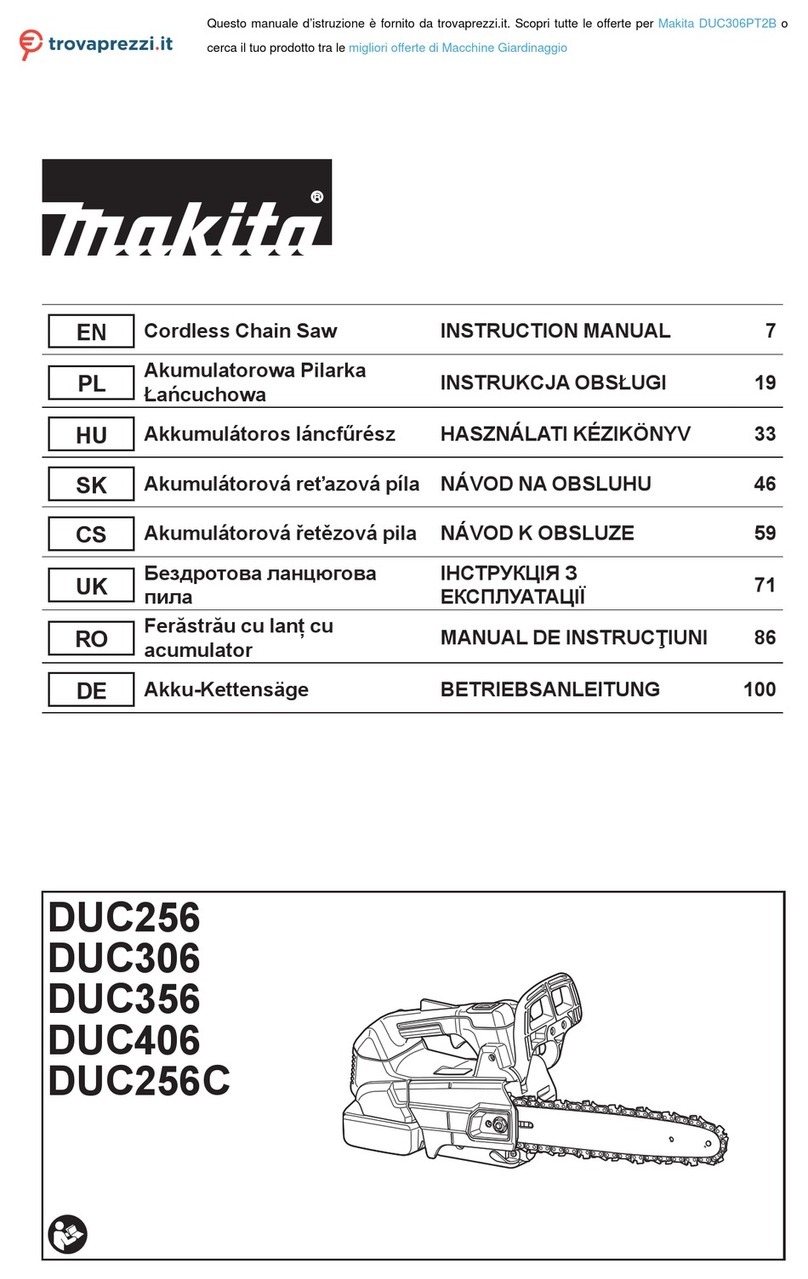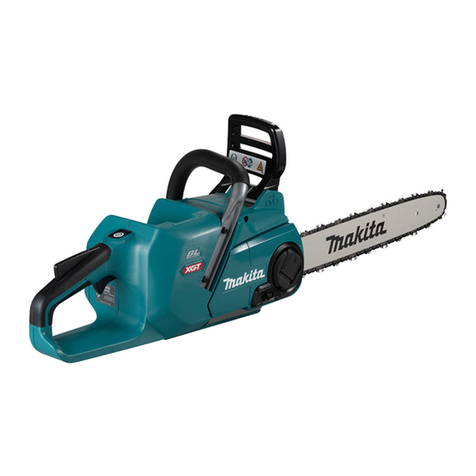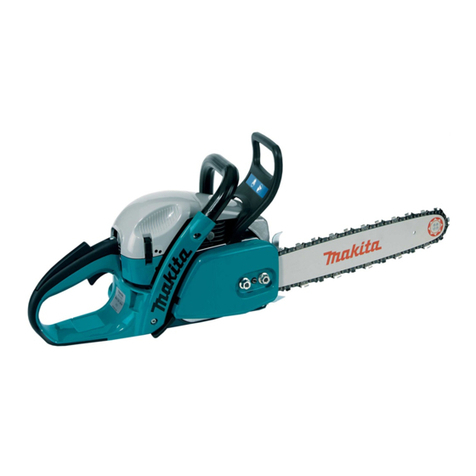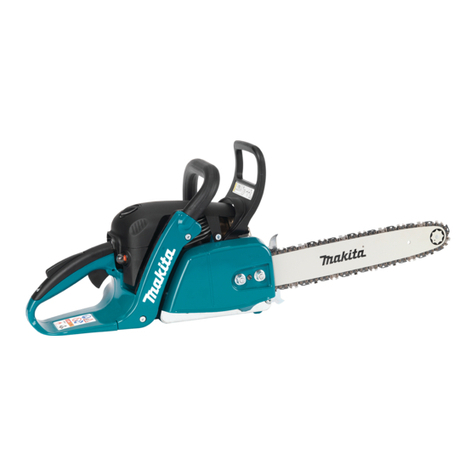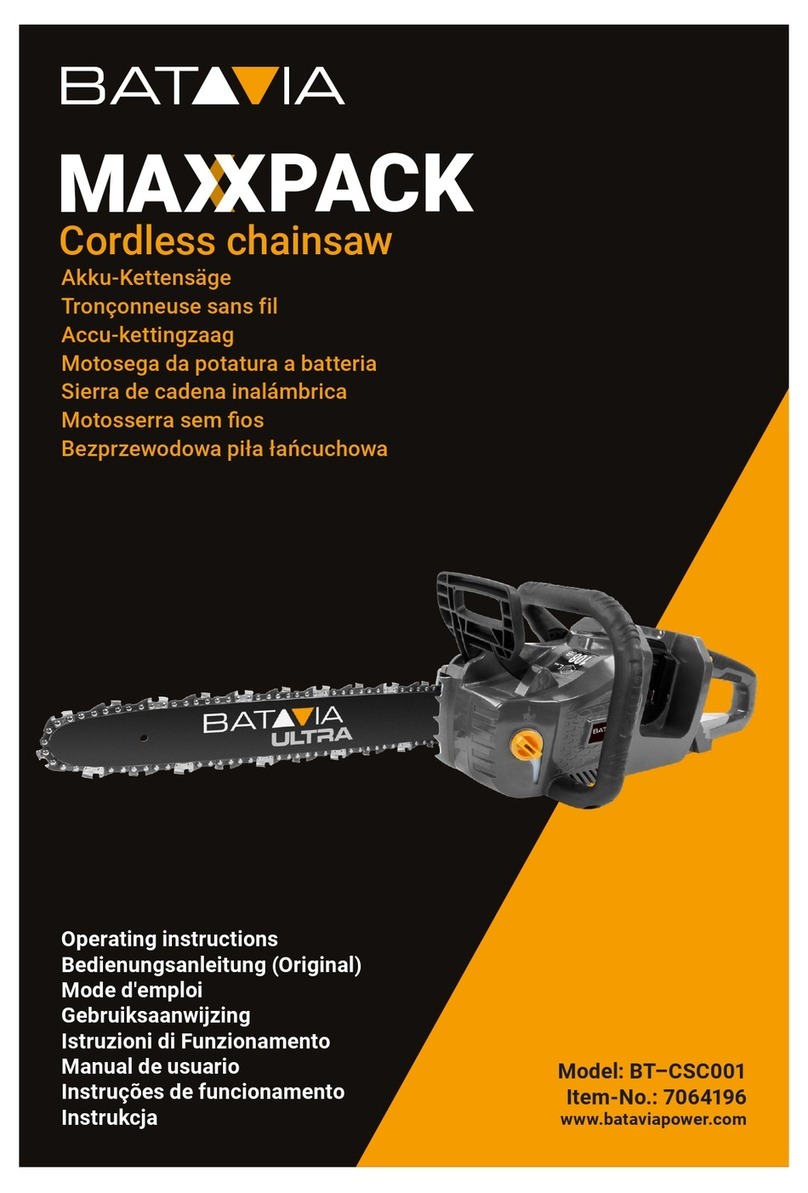
6ENGLISH
• Do not overreach and do not cut above
shoulder height. This helps prevent unin-
tended tip contact and enables better control
of the chain saw in unexpected situations.
• Only use replacement bars and chains spec-
iedbythemanufacturer.Incorrectreplace-
ment bars and chains may cause chain
breakage and/or kickback.
• Follow the manufacturer’s sharpening and
maintenance instructions for the saw chain.
Decreasing the depth gauge height can lead
to increased kickback.
13. Before starting work, check that the chain
saw is in proper working order and that its
condition complies with the safety regulations.
Check in particular that:
• The chain brake is working properly;
• The run-down brake is working properly;
• Thebarandthesprocketcoveraretted
correctly;
• The chain has been sharpened and ten-
sioned in accordance with the regulations.
14.
Do not start the chain saw with the chain cover
being installed on it. Starting the chain saw with the
chain cover being installed on it may cause the chain
covertothrownoutforwardresultinginpersonalinjury
anddamagetoobjectsaroundtheoperator.
Top handle chainsaw specic safety
warnings
1. This chain saw is designed especially for tree
care and surgery. The chain saw is intended
to be used by properly trained persons only.
Observe all instructions, procedures and rec-
ommendations from the relevant professional
organization. Otherwise fatal accidents may
occur. It is recommend that always using a
rising platform (cherry picker, lift) for sawing
in trees. Rappelling techniques are extremely
dangerous and require special training. The
operators must be trained to become familiar
with safety equipment usage and climbing
techniques. Always use the appropriate belts,
ropes and carabiners when working in trees.
Always use restraining equipment for both the
operator and the saw.
2. Perform cleaning and maintenance before
storage in accordance with the instruction
manual.
3.
Ensure safe positioning of the chain saw during
car transportation to avoid fuel or chain oil leak-
age, damage to the tool and personal injury.
4. Regularly check the functionality of chain
brake.
5. Do not ll the chain oil near re. Never smoke
when you ll the chain oil.
6. National regulation may restrict the use of the
chain saw.
7. If the equipment gets heavy impact or fall,
check the condition before continuing work.
Check the controls and safety devices for mal-
function. If there is any damage or doubt, ask
our authorized service center for the inspec-
tion and repair.
8. Always activate the chain brake before starting
the chain saw.
9.
Hold the saw rmly in place to avoid skating (skid move-
ment) or bouncing of the saw when starting a cut.
10. At the end of the cut, be careful to keep your
balance due to the “drop”.
11. Take into account the direction and speed of
the wind. Avoid sawdust and chain oil mist.
Protective equipment
1. In order to avoid head, eye, hand or foot
injuries as well as to protect your hearing the
following protective equipment must be used
during operation of the chain saw:
—
The kind of clothing should be appropriate, i. e.
itshouldbetight-ttingbutnotbeahindrance.
Donotwearjewelryorclothingwhichcould
become entangled with bushes or shrubs. If
you have long hair, always wear a hairnet!
— It is necessary to wear a protective helmet
whenever working with the chain saw. The
protective helmet is to be checked in regu-
lar intervals for damage and is to be replaced
after 5 years at the latest. Use only approved
protective helmets.
— The face shield of the protective helmet (or
the goggles) protects against sawdust and
wood chips. During operation of the chain
saw always wear a goggle or a face shield to
preventeyeinjuries.
— Wear adequate noise protection equip-
ment (ear muffs, ear plugs, etc.)
— The protective jacket consists of 22 layers
of nylon and protects the operator against
cuts. It is always to be worn when working
from elevated platforms (cherry pickers,
lifts), from platforms mounted on ladders or
when climbing with ropes.
—
The protective brace and bib overall is made
of a nylon fabric with 22 layers and protects
against cuts. We strongly recommend its use.
—
Protective gloves made of thick leather are part
of the prescribed equipment and must always be
worn during operation of the chain saw.
— During operation of the chain saw safety
shoes or safety bootsttedwithantiskid
sole, steel toe caps and protection for the
leg must always to be worn. Safety shoes
equipped with a protective layer provide
protection against cuts and ensure a secure
footing. For working in trees the safety boots
must be suitable for climbing techniques.
Vibration
1.
Individuals with poor circulation who are exposed to
excessivevibrationmayexperienceinjurytoblood
vessels or the nervous system. Vibration may cause
thefollowingsymptomstooccurinthengers,hands
or wrists: “Falling asleep” (numbness), tingling, pain,
stabbing sensation, alteration of skin colour or of the
skin. If any of these symptoms occur, see a phy-
sician!Toreducetheriskof“whitengerdisease”,
keep your hands warm during operation and well
maintain the equipment and accessories.
SAVE THESE INSTRUCTIONS.
